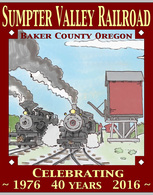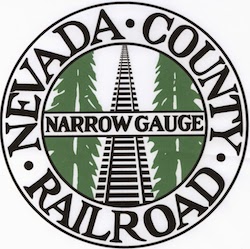

Quartz Hill Railroad.
Mammoth Copper Mining Company.By Greg Maxwell.
I n 1904 the United States Mining and Smelting Company acquired the Mammoth group of copper-gold mining claims in Shasta County, California. They then formed the Mammoth Copper Mining Company to develop the property. The next year the company built a smelter near Kennett (m.p.276) on the Southern Pacific’s Shasta Line. To provide quartz flux for the Kennett smelter, Mammoth Copper Mining leased the Quartz Hill gold mine in the “Old Diggings” mining district, 13 miles south of Kennett.
In late December, 1906 the mining company started construction on a 3.5 mile long, three foot gauge railroad to connect the Quartz Hill mine with the Southern Pacific at Cuargo (m.p.266.3). For the most part, the line was unremarkable. The grade was light, climbing a little more than 200 feet from the Sacramento River to the mine. One interesting feature of the Quartz Hill Railroad was its crossing of the Sacramento River. A substantial bridge consisting of two 70’steel Warren deck truss spans carried the Quartz Hill Railroad to the west bank of the river where ore bins had been erected.
The narrow gauge was operated with two Porter tank engines purchased new by the Mammoth Copper Mining Company in 1907. The first locomotive was a 15 ton 0-4-0T. This initial engine may have been found lacking as a second, heavier 0-4-2T was acquired eight months later.
The Quartz Hill line fulfilled the task of moving low grade quartz-gold ore to the SP connection for the life of the operation. Once the mine and railroad were up and running in 1907, two standard gauge cars were shipped daily from Cuargo to the smelter at Kennett. Over a span of seven years the narrow gauge reportedly transported 300,000 tons of fluxing ore. In 1912 the Mammoth Copper Mining Company exercised its option to extend the lease on the Quartz Hill property for an additional five years. By 1915 the readily available quartz was exhausted and the flux mining operation and railroad were closed. The heavier of the Porter tank engines and the ore cars were sold to the Nevada Short Line Railway at Rochester, Nevada. The track and other materials were sold for scrap. After the Quartz Hill operation was closed, the Kennett smelter received flux from Tonopah, Nevada and other sources until its closure in 1923. Today the BLM maintains a hiking path, the “Hornbeck Trail” over the former grade of the Quartz Hill Railroad.
John R. Signor, SP’s Shasta Division, Wilton and Berkley, CA: Signature Press, 2000.
Various online journals and newspapers
H.K. Porter builder’s records, as compiled by R. Lemuth
Reference Material Available Online:
Photographs.
Collected Quartz Hill Railroad Photographs.
Images collected from private collections, libraries and historical societies.
Roster.
Steam Locomotives:
#3, 0-4-0T Porter c/n 3869, blt 2/1907, cyl 9x14, wt 29,000#
#5, 0-4-2T Porter c/n 4050, blt 10/1907, cyl 12x18, wt 29,000#



